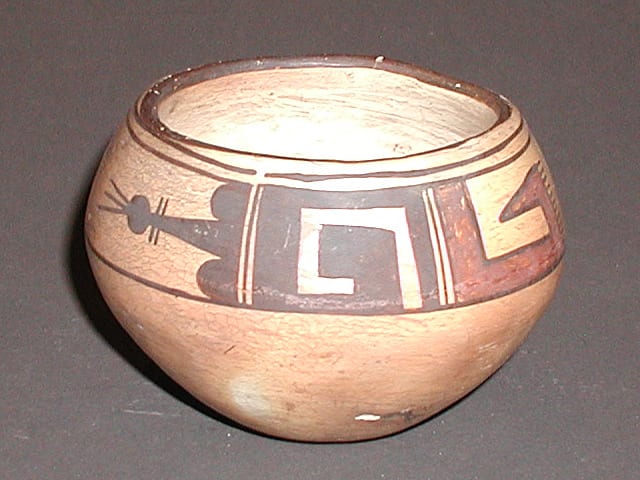This pot has a design that consists of three elements: 1) a black pahos (prayer feather) or sash emerging from a “clown” design, 2) a squared black crook, and 3) a pointed red crook with 12 thin “hair” lines. This three-element design is repeated twice on the pot. The bowl has a crackled white slip and a rounded bottom.
Although the slip and crackling are a bit different, and the pot lacks the typical red Polacca red rim, this could almost be a Polacca D pot (circa 1890-1900) with a transitional Sikyatki revival design. Otherwise, it might be from a later period, perhaps 1910 to 1930; it is difficult to say. While there is no evidence that this is an “Old Lady” Nampeyo pot, the use of the pahos design emerging from a “clown” image (Kramer, 1996:188) and the crook design, plus the quality of the pot and painting, are all characteristic of Nampeyo’s Sikyatki revival work.




